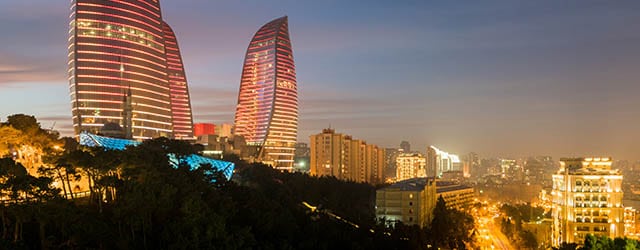Asia has become the world’s most dynamic region since the development bank first launched. But 1.6 billion Asians still cannot access basic services.

Click For Other Sections
As one approaches one’s 50th birthday, it is not unusual to consider how to adapt to changing circumstances, budget for the years ahead and weigh priorities. As the Asian Development Bank (ADB) members gather in Baku, Azerbaijan, in early May, such concerns are top of the agenda.
Asia has changed out of all recognition since 1966. Years of fast growth and free-market reforms have transformed it into the world’s most dynamic region. China is now a powerhouse; so too, South Korea, Malaysia and much of Southeast Asia, which back then was one of the world’s poorest regions.
Yet a huge amount still needs to be done, much of it due to the region’s population growth. Some 1.6 billion Asians are defined as poor, unable to access basic services, education and healthcare, while conditions in other countries—including Afghanistan, Bangladesh and Myanmar—are such that spending and investment there needs to be more than proportionate.
Indu Bhushan, director general of ADB’s strategy and policy department, says the bank has three priorities: promoting inclusive growth, sustainability and regional integration. Such integration is key if Asia is to realize its long-term potential, he says.
“Poverty is still a problem but so too is growing inequality across the countries and within them,” he says. “This means we must make growth more inclusive by supporting such things as education and healthcare.”
As many countries graduate to becoming middle-income, demand for ADB services is changing. The bank is looking at new means of financing, including doing more co-financing with the private sector through public-private partnerships and expanding the bank’s equity and capital base.
At this year’s general meeting in Baku, the ADB will triple its equity by combining Asian Development Fund monies based on donor contributions with the rest of its balance sheet. Bhushan says the move will effectively increase the bank’s ordinary capital resources to $53 billion, enabling it to undertake a much greater range of activities in all its member countries.
But if the bank fails to adapt to Asia’s evolving needs, it could lose shareholder support. “Unless we keep reinventing ourselves, there is a risk we could become irrelevant or obsolete,” he says.
Bhushan sees the emergence of the Asian Infrastructure Investment Bank as a positive, given the scale of the task ahead in Asia. “Some $8 trillion needs to be spent on physical infrastructure over the next decade, of which we would expect the ADB to be able to finance some $200 billion, so the more institutions there are to help fill this huge gap, the better,” he says, provided they follow international best practices for governance and also employ social and environmental safeguards.
Investment across the ADB region is expected to take place against a backdrop of continuing growth, despite the slowdown in China, with India—whose economy is now just one-third the size of its neighbor—keen to catch up. Most of the region will also be helped by lower energy prices.
“Both India and Indonesia have launched big reform programs aimed at making their investment climate more attractive,” says the ADB’s chief economist, Shang-Jin Wei. “We expect this to pay big dividends. And Burma, being English-speaking, with a long coast and cheap labor force, has huge potential, although it also needs huge expenditure on its infrastructure.”
Wei warns, however, that the slight slowdown that took place last year should be seen as a warning. “In many ways most member countries are better prepared than ever to maximize growth and investment opportunities, but they need to remain vigilant to any slowdown or interruption in capital flows and take the appropriate steps to mitigate this,” he says.




